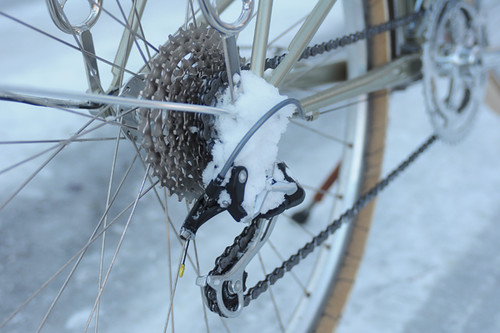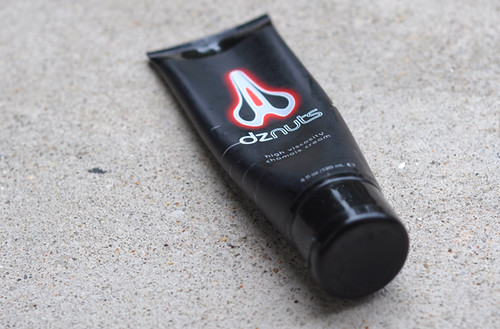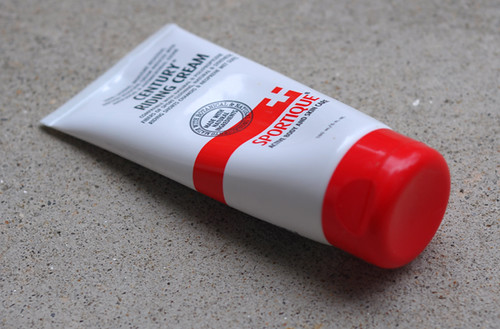A couple of weeks ago I had asked for your favorite shells and why. Here is some of what I
got. Please bare with the email cut and pastes. No clue how to fix that. But the feedback is great. Thanks to all who took the time and contributed. Enjoy!
For ice climbing in Colorado, I am pretty happy with this:
1 - Eddy Bauer Accelerant jacket layered over a thin base layer. It
is surprisingly warm, very lightweight, and has an excellent athletic
fit with long arms. I sometimes use the thumbholes on the sleeves.
This jacket solves the annoying problem of hood wars. I like one hood
under the helmet (this jacket provides that) and one hood over the
helmet (the next jacket provides that). For fast moving in coldish
conditions it breathes adequately and seems reasonably durable. The
Arcteryx equivalent of the Accelerant is probably just as good, but
more expensive and I do tend to trash these little lightweight
jackets. Also I really like the thumbholes and lightweight hood of
the Accelerant.
2 - When it gets colder, or for belays, I add a Wild Things lightly
insulated jacket. That one is compact enough I am happy wearing it
while climbing. It breathes ok, is windproof and very water resistant
and durable. It has a good over the helmet hood. It could be warmer
for belays, but I don't like carrying a garment just for belays. When
I am instructing and standing around a lot I take an old OR synthetic
puffy instead which is heavier, but toasty.
3 - Whenever I can get my hands on one of the waterproof/breathable
non-woven Dyneema jackets I'll throw one in the pack for hideous
conditions.
Bob Culp
Hi.
I'm Matti from Finland and I'm pretty active all round climber, skier and hiker. And
with ski I mean telemark, cross country and Nordic touring. The weather is normally
pretty severe here in northern Finland, Sweden and Norway where I do most of my
winter activities. -20C is pretty standard day during the Jan - Mar. My coldest ice
climbing week had average of -32C. I'm not very good at ice stuff, but I can lead WI
4-5 so it serves as "feelgood" activity during winter where I mostly climb
multipitch WI3 in Norway and Sweden. My main focus is in summer stuff (7c+ in both
sport and boulder and (well protected) trad up to ~7a). Anyho I get around 200
outdoor days (I also include after work stuff) per year.
My absolutely favourite is old 'Ryx Gamma MX hoody(polartec version). It works in
everything (as long as the weather is below zero degrees) and awesomely. Put thick
merino underwear under it and perhaps light down west (like Patagucci down west) if
it's real cold. You stay warm and dry even if you get totally soaked during climb
and it's -20C. First the stuff might freeze, but in few moments of high wattage
action and you are dry again. And unlike real hardshell the shit really breaths. You
can see the difference as huge cloud of steam :). This is very important fe in
Nordic touring, cross country skiing or when I'm skinning as you sweat up to 12
hours a day.
I must say that I sweat like a pig, but So Far (tm) I haven't tried a HS material
that would actually keep me dry even in dry if I'm active. And in really cold the
water just stays inside the HS jacket. Also they tend to rip.
Also the stretch cuffs are pretty much second best feature in the jacket. Combine
them with gloves (like those stupendously expensive 'Ryx leather gloves) you can
tuck in and you've got seal that's totally water and snow proof. No matter what you
do it doesn't open up. Also it' really robust. Velcros just break down. I know it's
probably not so much of an problem with you as you guys change to new apparel more
often than I change my underwear, but with us regular joe's we really appreciate
garment that lasts. I've gotten 7 years of active use out of my Gamma and now it's
totally destroyed.
Also the cut is fantastic. I love just how the garment fits just so and doesn't
leave any extra material to block my view to harness. Also at the same time it
allows good range of motion.
Regarding most of the stuff above I'm in a bit of a dilemma. New Gamma MX doesn't
just float my boat way old one did. Cut is more average consumer orientated,
material isn't as wind resistant (old one was spot on for my tastes) and seems
somehow less sturdy. This brings the problem that there really isn't any other
jackets with:
1. Good cut and quality
2. same cuffs
3. Powershield
4. Good hood
5. Wouldn't mind if it also looked good.
Ideas?
We've got custom shop here in my hometown (Oulu) that makes tailored outdoot gear
(www.shelby.fi<http://www.shelby.fi>), but polartec powershield isn't available
unless one gets few hundreds of meters of it -> they do not stock it.
-Matti Sillanpää-
My choice for a softshell jacket is the Marmot tempo hoody. This is an
inexpensive non-lined softshel. Mot importantly, it fits me really well in XL. I
am tall with long arms, and I find it extremely difficult to find a jacket that
works for climbing. The Tempo has a long back and arms, and is one of the very
few jackets that I can tuck under a harness, and will not pull out when I raise
my arms over my head. The hood works well over a helmet. The cuff closures are
simple and effective. The pockets are located above the harness and out of the
way of pack straps. No pit zips. Simple and clean. It is not as waterproof nor
as wind resistant as some of the lined shells, but it makes up for that by being
extremely breathable; the inside stays dry and your body stays warm. Great,
simple, effective, inexpensive jacket. Also comes in some offensive florescent
colors for Dane! All the best. Daniel
Harro said...
Arcteryx Gamma SL hybrid is a nice jacket as well as being truly light weight
at 13 oz.
http://arcteryx.com/Product.aspx?EN/Mens/Gamma-SL-Hybrid-Hoody
I
personally think "uninsulated shells" should clock in well under 14 ounces,
anything heavier is too much. My Alpha LT hardshell is 13.5 oz.
brian said...
Great discussion as always Dane. What about the Acto MX Hoody? I switched
last year after climbing in Gamma MX Hoody's and the first gen of the Venta MX
for many years. I find the Acto breathes much better than any other softshell,
and when it gets real nippy, i throw the Atom LT over it. No complaints other
than the "trim fit" versus the "athletic fit" on the mx line.Andy said...
Hey Dane - totally second the comment by Brian about the Acto MX Hoody. I
agree it's perhaps best to call it a hardfleece rather than a soft shell. But in
terms of the fabrics properties and performance I find it similar to something
like the Rab Scimitar you reviewed above. But better. Very breathable, very
water resistant, amazingly durable, though not very wind resistant. Not too
different from most stretch woven fabrics though I reckon. I too was a long time
Gamma MX Hoody user, I find the Acto way better all things considered and it's
the best hardfleece/soft shell I've ever used.Ian said...
In my mind the best hardshell is the one that never leaves my backpack. I
have yet to wear a hardshell I actually liked. I have a very lightweight Rab
shell but I've only ever worn it once. First Place for me: Patagonia Supercell Jacket. Gore-tex paclite material,
weighs 13.5 oz. Great fit (for me - 5' 11'' 180 pounds size large). As
breathable as traditional hard shell gore tex gets in my opinion. Super
minimal design and great hood. This is my new go to shell for just about
any adventure in the mountains but especially for ice climbing. My favorite
shell is the one that stays in my pack until I really need it. In this
case, the supercell performs great, packs up into its hood, provides great
waterproof protection and breaths pretty damn well (vents still needed when
really working hard).
Zach Lees
Until last winter I was
using some lighweight hardshells from Mountain Hardwear and TNF. Neither
of them were really Alpine specific. The MH was too long and always
interfered with ropes and harness access. The TNF jacket was a nice
shorter cut and very packable, but more geared for warmer weather and I
never fully trusted its ability to keep me warm and dry in nasty
conditions. Last winter my goal became to find a high quality, high-value
alpine shell with Goretex Proshell, or equivalent. I ended up going with
the Outdoor Research Mentor
http://www.outdoorresearch.com/en/or-gear/jackets/mens-mentor-jacket.html
I think the suggested retail price is very fair for a pro shell jacket, and
OR gear always seems to end up on sale or clearance. I scored my Mentor
for about half off. While I have yet to test it in any real nasty weather,
my initial impressions are strong. Seems to be of high quality
construction, and fit and style suit me well. It also feels pretty bomber
and will hold up to the New England granite and whatever else I put it
through. Here is a picture of me on Mt. Osceola (New Hampshire) last
winter. I think OR will be a good source of high-value outerwear for the
next few years as its clothing line expands ahead of its reputation. I
think they have always been well respected for their gaitors, gloves, hats,
etc. and I think their outerwear will follow suit. I am about to spring
for last season's OR Maestro down jacket which is on clearance on several
websites. At least on paper it stacks up to most of the 800-fill power,
quantum pertex shelled down belay jackets.
For a soft shell I wear a Rab Baltoro. I picked it up on clearance as
well. Does SteepandCheap.com ship to Canada? While I haven't used any
others, I can say that I really enjoy the Rab. Originally a soft shell
skeptic, it won me over. For soft shell pants, I am in love with my Wild
Things Mountain Guide pants. On one of my first winter overnights I
experienced some layering errors and ended up sweating into and soaking
much of my insulating layers. Those mountain guide pants wicked and
evaporated everything and stayed dry as a bone. My Rab jacket froze into a
solid lump when I swapped it out for my down hoody and hard shell on the
wind-blown summit.
Regards,
Tony
My weapon of choice is the Haglöfs fang. Sadly as far as I can tell it is
discontinued. I will just give you a short list of features I really liked, the
material, weight, etc. are on the web anyway.
+A huge hood, a meteor 3 fits nicely, is 4 way adujstable
+pit zips for dumbing heat ( I tend to sweat like a pig)
+the most durable softshell I had so far
Not much of a review but worth a look if you see one on sale, I'm 190cm and 78kg
and have L, if you want to wear some extra layers XL is fine too.
Bert



























 Sure, they are “domesticated” Buffalo, being raised on a ranch, but they still roam...
Sure, they are “domesticated” Buffalo, being raised on a ranch, but they still roam... Their manners and actions reminded me of once, a long time ago, when I stopped to photograph some cows back in Indiana. Apparently cows and buffalo are both curious creatures; they kept coming closer and closer.
Their manners and actions reminded me of once, a long time ago, when I stopped to photograph some cows back in Indiana. Apparently cows and buffalo are both curious creatures; they kept coming closer and closer. So close that I could have reached out and touched them...
So close that I could have reached out and touched them... Momma was very protective of her calf.
Momma was very protective of her calf. Photos taken in south-central Montana on July 22, ..
Photos taken in south-central Montana on July 22, ..

 brian said...
brian said... 


 Since the start of the Spring season, I have been getting emails from women that read something like this:
Since the start of the Spring season, I have been getting emails from women that read something like this:
 Also, even if you have been cycling since age 5 and can compete in timed half-centuries in your sleep, consider downplaying your prowess and adapting a "leisure cycle" mode. Don't kit up. If you have an old beater bike, ride that when you are together instead of your super-fast roadbike. I would even go so far as to suggest buying an old vintage upright-ish bike for yourself, to match the level of the bike your spouse will be riding. This will even out the playing field between the two of you and will make you less intimidating.
Also, even if you have been cycling since age 5 and can compete in timed half-centuries in your sleep, consider downplaying your prowess and adapting a "leisure cycle" mode. Don't kit up. If you have an old beater bike, ride that when you are together instead of your super-fast roadbike. I would even go so far as to suggest buying an old vintage upright-ish bike for yourself, to match the level of the bike your spouse will be riding. This will even out the playing field between the two of you and will make you less intimidating. 






